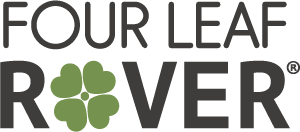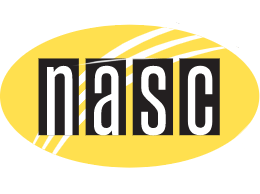How To Avoid Glyphosate/Roundup Exposure For Dogs

With the obsession for green grass and greener pastures and crops, glyphosate (the herbicide brand Roundup) has worked its way into the daily lives of everyone … especially dogs, whether they live in the city or country.
What began as a herbicide for crop farming has exploded into a worldwide concern about its effects on health. One study declares, “glyphosate is possibly the most important factor in the development of multiple chronic diseases and conditions that have become prevalent in Westernized societies.”
What Is Glyphosate/Roundup?
Glyphosate is the primary ingredient in Roundup, a broad-spectrum herbicide used in applications like agriculture, forestry, landscaping, and residential weed control by homeowners. That means your dog is exposed to glyphosate/Roundup everywhere … in his food, his water, lawns and streets … and the parks he plays in.
Glyphosate/Roundup is widely used to control weeds and other unwanted plants. It was introduced in the 1970s by the agrochemical company Monsanto (now owned by Bayer) and is now the most widely used herbicide in the world. Glyphosate works by inhibiting the activity of an enzyme called EPSPS, which is essential for plant growth. This leads to the death of the plant and prevention of further growth.
It kills weeds … and anything in its path or spread through the air to gardens or yards.
How Glyphosate/Roundup Is Used
Glyphosate/Roundup is used as a standalone product or combined with genetically modified (GM) glyphosate-resistant crops. That means it kills any unwanted plants (weeds) that have not been genetically modified to withstand its weed-killing effects.
It’s used as a desiccant for crops like wheat before harvest, so entire fields of plants dry out and are ready for harvest at one time.
Once sprayed on plants, glyphosate/Roundup is absorbed into them and cannot be rinsed off.
But there’s growing concern about glyphosate/Roundup’s environmental and health effects, particularly its impact on non-targeted plants and human and animal health.
Is Glyphosate/Roundup Harmful To Humans?
The World Health Organization's International Agency for Research on Cancer (IARC) classified glyphosate/Roundup as a "probable human carcinogen" in 2015, based on studies in laboratory animals and limited evidence in humans.
In addition to its potential for cancer, many studies suggest that glyphosate/Roundup exposure may be associated with other health effects, such as endocrine disruption and neurotoxicity.
Is Glyphosate/Roundup Harmful To Dogs?
Dogs are susceptible to the same cancer, endocrine disruption and neurotoxicity risks as people. Dogs can be exposed to glyphosate/Roundup by eating plants or grass that have been treated with glyphosate-based herbicides, by drinking contaminated water, or by direct exposure to the herbicide ... walking on treated surfaces (and then licking their paws).
And, more importantly, it’s in a lot of manufactured dog food.
Glyphosate/Roundup In Dog Food
OWL foods – oats, wheat and legumes – are common dog food ingredients that are sprayed with glyphosate-based herbicides like Roundup. Other common ingredients include corn, barley, canola and soy, as well as legumes like peas, lentils and chickpeas.
According to Health Research Institute Laboratories, a survey showed the amount of glyphosate/Roundup found in the urine of dogs on a kibble diet was 32 times the human average. Those eating grain-free kibble had the highest levels, while those on raw diets had no detectable glyphosate. Researchers have tested oats and legumes and found they contribute higher glyphosate levels to humans, and are a predominant ingredient in grain-free pet food.
The best way to avoid glyphosate/Roundup in your dog’s food is to feed a fresh, whole food diet. If you’re feeding a processed, dry food, choose brands with ingredients that are certified organic. These foods don’t use GMO crops and are less likely to contain glyphosate/Roundup residues, as organic farming practices prohibit the use of synthetic pesticides and herbicides.
How Much Exposure To Glyphosate/Roundup Is Dangerous To Dogs?
The amount of glyphosate/Roundup exposure that’s dangerous to dogs can vary depending on your dog's size, age and overall health, as well as the amount and concentration of glyphosate exposure.
Symptoms of glyphosate poisoning in dogs can occur at different exposure levels. Mild symptoms may occur at exposure levels of 500 to 1,000 mg/kg, while severe symptoms may occur at levels of 1,000 to 3,000 mg/kg or higher.
Signs Of Glyphosate/Roundup Poisoning In Dogs
Symptoms of glyphosate/Roundup poisoning in dogs may include:
- Vomiting
- Diarrhea
- Drooling
- Lack of appetite
- Lethargy
- Difficulty breathing
- Seizures or coma in severe cases.
In severe cases, glyphosate/Roundup toxicity can cause kidney or liver failure, which can be life-threatening.
Natural Ways To Manage Glyphosate Poisoning In Dogs
There is no specific natural remedy for glyphosate poisoning in dogs, but here are things you can give your dog to support his health. And most can be given regularly … not just when your dog's been exposed to glyphosate/Roundup. But if your dog has serious symptoms, you need to get medical help.
Probiotics
Glyphosate exposure can disrupt the balance of healthy bacteria in the gut. Probiotics can nourish natural gut bacteria and help support digestion and bowel health.
Fluid Therapy
Glyphosate/Roundup exposure can cause dehydration and electrolyte imbalances so giving fluids like bone broth can help rehydrate.
Antioxidants
Glyphosate/Roundup exposure can cause oxidative stress, which can damage cells and tissues. Foods with antioxidants, such as vitamin C and E, can help eliminate free radicals.
Herbal Remedies
Some herbs, such as milk thistle and dandelion, can help maintain normal liver function and detoxification.
Activated Charcoal
Activated charcoal is a natural substance that’s also used by conventional veterinarians to help absorb toxins in the digestive tract. It may help reduce absorption of glyphosate/Roundup into the bloodstream.
How To Avoid Glyphosate/Roundup Poisoning In Dogs
Here are some steps you can take to help prevent glyphosate/Roundup poisoning in dogs:
- Keep your dog away from areas that have been treated with glyphosate/Roundup or other herbicides, including lawns, gardens, and agricultural fields.
- Don’t use glyphosate/Roundup products around your own home. You can’t stop neighbors from using it or stop it from drifting, but at least you’ll know your yard is safer for your dog.
- Stop your dog from eating grass or plants that may have been treated with glyphosate/Roundup or other herbicides.
- If you allow your dog to walk in areas that may have been treated with herbicides, keep him on a leash and supervise him closely. Then make sure you do step # 5 too!
- Wash your dog's paws and belly with soap and water after he’s been outside, especially if he’s been in areas that may have been treated with herbicides.
- If you suspect your dog’s been exposed to glyphosate/Roundup and he’s showing symptoms, contact poison control or your veterinarian.
- Use natural alternatives to glyphosate/Roundup and other herbicides in your yard and garden, such as manual weeding, salt and vinegar mixtures or natural herbicides.
Always avoid using any product with glyphosate/Roundup and share the word with other dog owners.
Glyphosate/Roundup Products To Avoid
Glyphosate is a widely-used herbicide that is found in many products, including:
- Roundup Herbicide: This is the most well-known brand of glyphosate-based herbicides and is commonly used by homeowners, gardeners, and farmers to control weeds.
- Ortho GroundClear: This is another popular brand of glyphosate-based herbicides that is used to control weeds in residential and commercial landscapes.
- Spectracide Weed Stop for Lawns: This is a glyphosate-based herbicide that is formulated specifically for use on lawns.
- Bonide Kleenup: This is a concentrated glyphosate-based herbicide that is used to control weeds in gardens and landscapes.
- Ranger Pro: This is a professional-strength glyphosate-based herbicide that is used by farmers and commercial landscapers.
- Aquamaster: This is a glyphosate-based herbicide that is used to control aquatic weeds and algae in ponds and other bodies of water.
With worldwide concerns about glyphosate/Roundup, there are ongoing studies being done to determine glyphosate toxicity. They require a combination of laboratory studies, epidemiological research, and environmental monitoring to obtain potential risks of exposure.
It’s impossible to avoid contact with glyphosate/Roundup but you can support your dog’s health, and your own, by buying organic products that have a lower pesticide risk, and feeding your dog a fresh, whole food diet to support his immune system and overall health.
References:
- Samsel, A. et al. Glyphosate’s Suppression of Cytochrome P450 Enzymes and Amino Acid Biosynthesis by the Gut Microbiome: Pathways to Modern Diseases. Entropy. 2013, 15, 1416-1463
- Costas-Ferreira, Carmen, et al. Toxic Effects of Glyphosate on the Nervous System: A Systematic Review. International Journal of Molecular Sciences. 2022 May; 23(9): 4605.
- Hietanen, E.et al. Effects of phenoxy herbicides and glyphosate on the hepatic and intestinal biotransformation activities in the rat. Acta. Pharmacol. Toxicol. 1983, 53, 103–112.
- Tarazona, Jose V., et al. Glyphosate toxicity and carcinogenicity: a review of the scientific basis of the European Union assessment and its differences with IARC. Arch Toxicol. 2017 Aug;91(8):2723-2743.
- Vandenberg, Laura N., et al. Is it time to reassess current safety standards for glyphosate-based herbicides? Journal of Epidemiology & Community Health. 2016, Vol 71, 6.
Find us in a store near you
Never miss out
Need help? Chat with us





